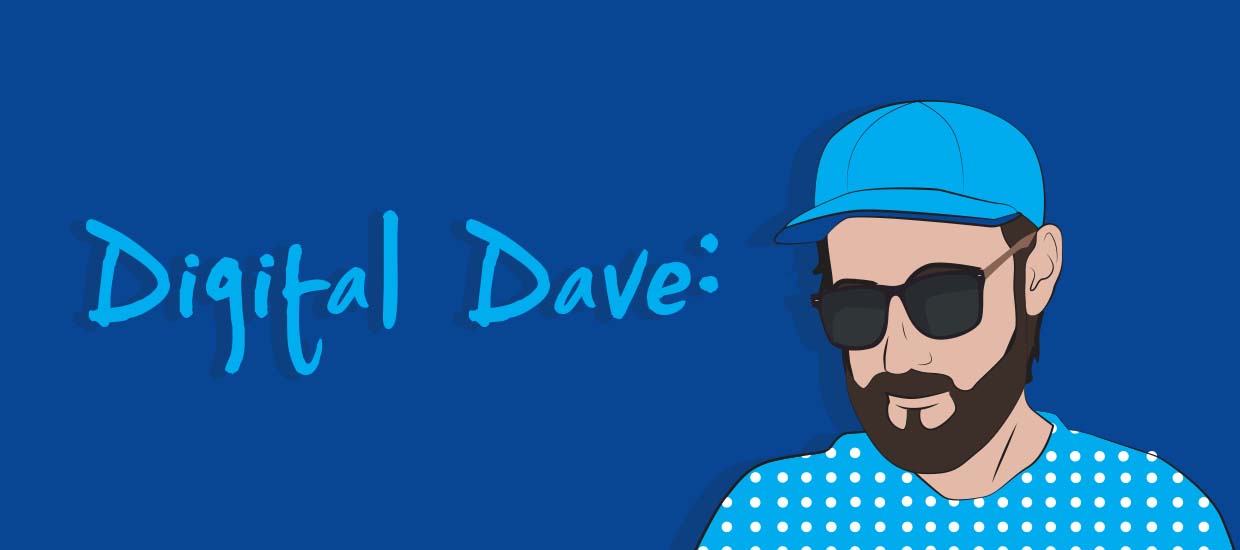Digital Dave: What the Telly?!
So what is Digital Signage anyway?
Digital Signage is pretty much a sub-segment of signage, except digital signage uses screen technologies such as LCD, LED and projection to display digital content, such as advertising, video, images and information. They can be found in public places, transportation systems, hotels, retail stores, hospitals, restaurants and corporate buildings, for wayfinding and advertising both indoor and outdoor.
What kind of stuff goes into it?
Numerous components make up a digital sign: hardware, software, connectivity, installation and content. The hardware components can vary from indoor LED screens that look (but don’t act) like a television, to outdoor LED modules that snap together to create giant video walls.
So, I can use a TV?
One of the most common questions I get asked around digital signage is “can I just use a TV?” However, just because Samsung commercial grade displays and a Samsung telly have the same brand on it, does not mean it comes from the same factory line. While the temptation of a slightly cheaper initial outlay by using a TV is attractive, the result most likely won’t be. It will end up costing you more in the long run.
How does a TV differ to a commercial screen?
Digital signage should be flexible, scalable, future-proofed and easy to manage, all the things that are impossible to achieve when using Consumer TV.
Consumer TV’s are only designed to be watched for a few hours a day. They also have a limited warranty, and they aren’t very bright. We’ve all been there; when you must close the curtains during a daytime telly binge, you know what too much glare and light can do. So, if you use a TV to display your advertising messages, the last thing you want is no one being able to see it!
Consumer TV’s are also limited to the type of content that can be played unless you buy additional hardware. That then needs to be powered, updated, serviced, supported and mounted. As a result, TV’s aren’t overly future-proofed. They don’t have a long lifecycle, making it hard to have a digital signage network. With every screen looking different, managing and controlling them off-site is near impossible without having to add more hardware.
Another critical thing to think about is security in public places. How do you lock down a consumer TV so other people can’t take the screen over and display any content they want? You may remember this happening to a retail store late last year, where their screen was hacked, and the messaging changed to porn. If “CONTENT IS KING” with Digital signage, choosing the right screen hardware isn’t far behind.
So, what’s a Samsung commercial display?
Unlike TV’s, Computaleta has a wide range of commercial displays that have media players all built-in that offer a variety of different brightness levels (350nits to 4000nits). Indoor, outdoor and in-window options mean there is a solution for most situations. Some options have antiglare screens, and available sizes range from 13” to 98.”
- Commercial screens have long life cycles, so they don’t outdate too quickly
- They have a 3-year warranty
- They can be on for either 16 or 24 hours a day. \
- They can be mounted in portrait or landscape
- They have software to create content & schedules, deploy and publish content in advance
- They can be managed remotely
- They can be secured in public places, so they can’t be hacked.
- They have on board storage allowing content to be displayed even if there is no internet.
- They have inbuilt advanced cooling technologies ensuring the screen won’t overheat even when in direct sunlight.
What do I need to consider before suggesting digital for my clients?
- Who is the audience and what is the scale?
- Where are the screens going to be installed?
- How are you going to create content and deliver it?
- How long is the screen going to be on for during the day?
- How are you going to secure the screen?
Taking all of this into consideration, are TV’s really cheaper than specially designed digital signage commercial screens? By the time you add it all up, the answer is no. Don’t fall into this trap, chat to us today, and we can help you put the right solution forward to your clients that will be flexible, scalable, future-proofed and easy!
For more information contact dave.watts@clgroup.co.nz


